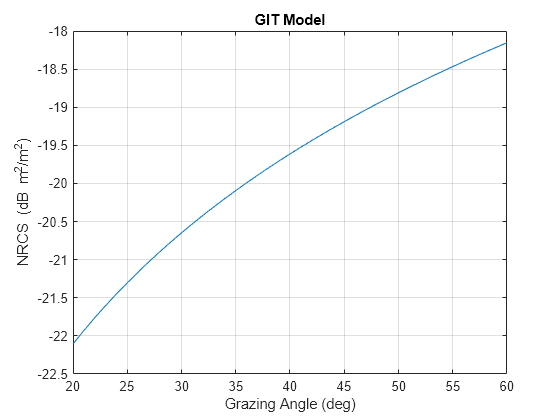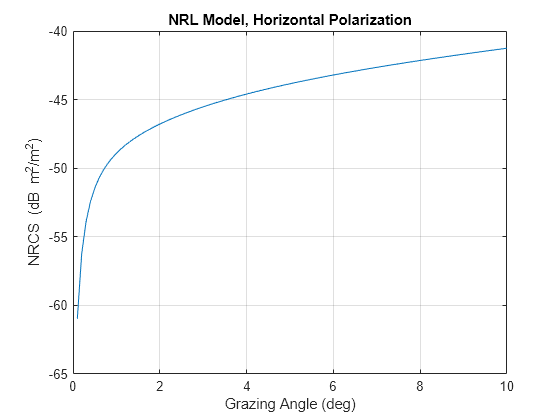surfaceReflectivity
Description
The surfaceReflectivity
System object™ creates a common interface for the surfaceReflectivityLand, surfaceReflectivityCustom, and surfaceReflectivitySea System objects.
To compute the normalized reflectivity:
Create the
surfaceReflectivityobject and set its properties.Call the object with arguments, as if it were a function.
To learn more about how System objects work, see What Are System Objects?
Creation
Syntax
Description
refl = surfaceReflectivityrefl, for a land surface. Use this
object to generate a normalized radar cross section (NRCS) (also called surface
σ0) as a function of frequency and grazing angle. This syntax
creates a constant gamma land reflectivity model with a constant gamma value of -20 dB,
which is representative of flatland.
refl = surfaceReflectivity(surfacetype)refl, for a
surfacetype specified as one of 'Land',
'Sea', or 'Custom'. Use this object to generate a
normalized radar cross section (NRCS) (also called surface σ0)
as a function of frequency and grazing angle.
refl = surfaceReflectivity(surfacetype,Name=Value)surfacetype with the specified property Name
set to the specified Value. You can specify additional name-value
pair arguments in any order as
(Name1=Value1,...,NameN=ValueN).
Example: refl =
surfaceReflectivity('Land',Model="GIT",LandType="Soil",SurfaceHeightStandardDeviation=1)
creates a normalized reflectivity object for land using the GIT model with a
LandType of Soil and a
SurfaceHeightStandardDeviation of 1.
Usage
Description
Input Arguments
Output Arguments
Object Functions
To use an object function, specify the
System object as the first input argument. For
example, to release system resources of a System object named obj, use
this syntax:
release(obj)
Examples
Extended Capabilities
Version History
Introduced in R2022a

